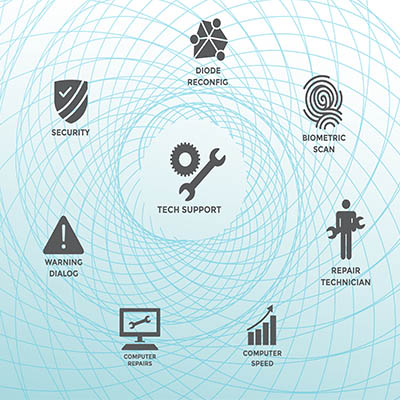Phishing attacks present a significant problem for the sustained stability of organizations. That is because they are a pervasive threat and come in several different forms. This month, we will outline some of the ways that phishing can affect an organization and a couple of things that you can do to keep them from being a problem.
Handling Data Breaches
Phishing attacks frequently aim to position hackers to pilfer sensitive data like login credentials, financial records, or intellectual property. When these attacks succeed, they can result in data breaches, leading to substantial financial losses, harm to the organization’s reputation, and legal consequences.
Financial Deterioration
Phishing attacks can lead to direct financial losses through unauthorized transactions. Attackers may employ stolen credentials to gain access to bank accounts, initiate wire transfers, or make unauthorized purchases, causing immediate financial harm.
Operational Disruption
Successful phishing attacks can disrupt the day-to-day functions of an organization. For instance, if an employee falls prey to a phishing attack and their email account is compromised, the attacker can send malicious emails, distribute malware, or access sensitive information, potentially halting business operations.
Reputation Damage
Phishing attacks can inflict severe harm on an organization’s reputation. Should customers, clients, or partners discover that their data was compromised due to a phishing attack, their trust in the company may wane, resulting in a loss of business and brand damage that may take years to rectify.
Legal and Regulatory Complications
Organizations are often subject to various data protection and privacy regulations, such as GDPR or HIPAA. Becoming a victim of a phishing attack that culminates in a data breach can lead to legal and regulatory compliance issues, including fines and penalties.
On top of these, there are several more negative ways phishing can impact your business. That’s why it’s important to do what you can to ensure that you don’t fall victim to them. Here are some useful tips that can help you avoid that fate.
Verify Sender Identity
- Always verify the identity of the sender before taking any action. Be cautious of emails, messages, or phone calls from unknown or unexpected sources.
- Check the sender’s email address for any discrepancies or misspellings, especially in the domain part of the email address.
- Avoid clicking on any links or downloading attachments from unverified or suspicious sources.
Look for Red Flags
Pay attention to common red flags in phishing emails or messages. These can include:
- Urgent or threatening language that pressures you to act quickly.
- Poor grammar and spelling errors in the message.
- Generic greetings like “Dear Customer” instead of using your name.
- Requests for sensitive information, such as passwords, Social Security numbers, or credit card details.
Use Two-Factor Authentication (2FA)
Enable 2FA whenever possible, especially for your email, banking, and social media accounts.
2FA adds an extra layer of security by requiring you to provide a second form of verification in addition to your password.
Report Suspicious Activity
If you receive a phishing email, message, or encounter a suspicious website, report it immediately. Report the phishing attempt to your email provider, social media platform, or relevant authorities. By reporting these events to an IT administrator, you can help take down phishing sites and prevent others from falling victim to the same scam.
Cybersecurity is a big job, if you would like to learn more about how you can protect your business from phishing attacks and all other manner of cyberthreats, give the IT security professionals at North Central Technologies a call today at 978-798-6805.







